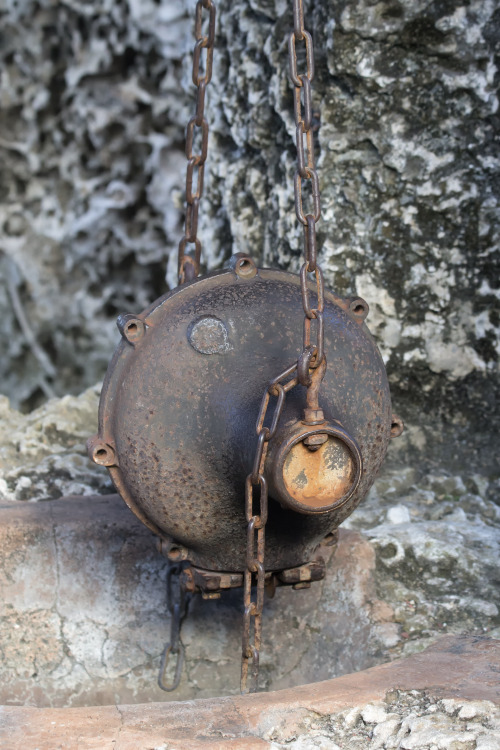

Saturday, September 15th, 2012 | Tags : 1942, Guadalcanal, Navy, Pacific Nearly 200 brave sailors lost their lives with the sinking of the Wasp, with many more wounded. Though her aircraft in the sky at the time of the attack were able to make emergency landings elsewhere, the rest of the planes the Wasp carried were lost with the ship. After a successful evacuation, the Wasp soon rested on the floor of the waters off Guadalcanal. The fires could not be fought and the order to abandon ship was given. On top of that, she was hit much like the battleship Arizona was at Pearl Harbor, struck near the magazine causing huge explosions from ammo and gasoline. Being as Wasp was lightly armored due to its construction limitations, she was particularly vulnerable. She was struck by several torpedoes fired from the Japanese submarine I-19. On 15 September 1942, Wasp along with the only other carrier available in the Pacific, the Hornet, was on escort duty ensuring the landing of 7 th Marines on Guadalcanal proper. Beginning in the early hours of 7 August 1942, Wasp’s Avengers, SBDs, and Wildcats hit several Japanese positions throughout the Guadalcanal islands, taking out 24 enemy aircraft at the cost of 4 of their own. With the American invasion of Guadalcanal in the works by July 1942, the Wasp was assigned to Admiral Fletcher’s force. After months spent training and patrolling the Atlantic-and an American declaration of war- Wasp was sent once again to ferry aircraft on behalf of the British RAF for actions at Malta in April 1942, and a return trip a month later to replace heavy aircraft losses in the first go-round.Īfter losing two carriers in naval combat ( Lexington at Coral Sea and Yorktown at Midway), the Wasp was suddenly in high demand in the Pacific. To build such a light aircraft carrier meant doing without much armor at all, which certainly contributed to the ship’s demise on this day 70 years ago, 15 September 1942.īefore America declared war, the Wasp was one of several ships that participated in the transport of US aircraft to Iceland in late summer 1941. For the Wasp, this meant displacing no more than 15,000 tons. The aircraft carrier was built according to proportions agreed upon at the Washington Naval Conference in 1922. The USS Wasp (CV-7) was laid down on 1 April 1936, and commissioned on 25 April 1940. As could be the case with the artifact theory, the Season 7 theme of aliens and outer space does go hand-in-hand with conspiracies.The Wasp gets hit hard, 15 September 1942. The players of Fortnite are being left confused after getting mysterious Fortnite postcards in the mail, without any reason why the specific recipients were chosen. Speaking of the new Fortnite season, Epic has been doing some rather unorthodox marketing. Either way, all must be known at the end of next week. At this time, there are the Foreshadowing Quests, that give insight for what to expect with Fortnite: Season 7, however the players of Fortnite are theorizing that the ancient artifacts can be secretly significant in some fashion. The players are wondering if those new artifacts, along with the one taken from Glyph Master Raz some weeks ago will play a role in several capacity of furthering Fortnite’s narrative. Some players have begun speculating if the artifacts can hold greater significance beyond just another weekly quest. Do not forget, ensure to finish up as many challenges as you can before the end of the season.

Please discover one artifact at each location.


 0 kommentar(er)
0 kommentar(er)
